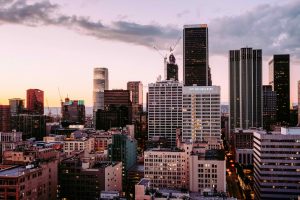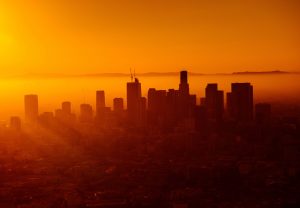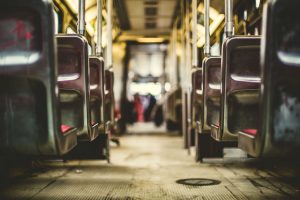Smoke And The City
Don't you just love the hustle and bustle of the big city? L.A. traffic is?a drag, but you get used to it. Parking is always so expensive in Downtown, but it's worth it when you think about it. Public transportation is pricey and usually late, but at least you can get to where you need to be. And, the amount of people who smoke is simply unbearable.

If you're not a smoker, then you probably cringe at the thought of it. What are some things you don't like about it? It smells bad, and is therefore offensive? It gives people bad breath, which is also offensive? Oh yeah, and second hand smoke can kill you right? Wrong!
Whether or not the smell of cigarette and/or cigar smoke is offensive, is a matter of opinion. However, how would you react if you read an article that told you second hand smoke in not as harmful as smog? Or that even first hand smoke isn't as harmful as smog?
Here is that article. Second hand smoke might annoy you, but it won't do nearly as much damage as smog will. Before you huff and grimace at this article, continue reading with an open mind, and then form an opinion. Even your opinion has not changed, at least you'll know the facts.
Brief History Of Smog In L.A.

Before the middle of the 20th century, L.A. experienced its worst battle with smog. Clouds of smog were so thick, that people actually performed their daily tasks in gas masks. It wasn't uncommon to see a car full of people wearing gas masks drive past you.
Parents would allow their children to miss school if the smog was too thick, and some people would even miss work. The city of Los Angeles would send smog alerts ringing throughout the city, alerting residents that the atmosphere was bad.
Children and seniors suffered the most due to air pollution. They inundated the hospitals, complaining about?shortness of breath, headaches, stomach aches, and a number of other health issues. It was a really bad time to live in Los Angeles.
Inland Smog
L.A. smog wasn't limited to just the beautiful city, however. Residents in the inland regions?of Southern California suffered as well. Crops died out because of the smog that infiltrated the area.?As a result, around 1950, scientists at the University of Southern California began working on ways to combat smog.
Scientists At Work
Scientists created suits that they believed would be able to prevent illness caused by smog. They?believed that the suits would be just as effective, if not more effective, than the gas masks. The suits never really caught on, since they were big and bulky.
There were many initiatives during the 1950s to improve the air quality. Helene Stanley became know as Miss Smog Fighter. She was the poster child for the fight against smog, urging everyone to vote on Prop C. Prop C would implement new ways of reducing smog. Scientists concluded that car exhaust could be a prime suspect for the diminished air quality.
Inventions created in the 1960s helped prevent pollution from car exhaust. These inventions, although implemented, did very little to improve the air quality, and therefore became obsolete. More studies showed that car exhaust alone was not the primary source of pollution.
Culprits Of Pollution
Busses that ran on Diesel fuel were also culprits of pollution. Until as late as 1954, people were completely unaware of the harsh affects of diesel fuel. Diesel fuel added to the pollution that was caused by car exhaust. With both of these factors diminishing the air quality, there is no wonder why the smog didn't improve.

Another factor to consider, was industry. A brochure from the Chamber of Commerce boasted an artistic depiction of Los Angeles, featuring factory smoke stacks spewing out toxic gas into the atmosphere. Some of those smoke stacks are still polluting the air to this day.
As time marched on, the population grew. More people, meant more cars, which meant more exhaust emissions. With the inter- and intrastate freeways, drivers were able to spread their exhaust across vast distances. The freeway helped pollute the air even more than it already was.
Many people who fought against the use of tobacco convinced the public that the smog was due to cigarette and cigar smoke. From the 40s to the 60s, smoking became extremely popular. Big movie stars were always seen taking a drag, both on the screen and off the screen. Smoking became fashionable and trendy. People have always wanted to remain up to date on the latest trends, so almost everyone began smoking.
Smoke and Pollution
Like everything else, tobacco and nicotine have their benefits and their consequences. Everything should be done in moderation, including smoking. Compared to the amount of pollution people inhale on a daily basis, a smoke here and?there is nothing.
Despite popular belief, second hand smoke is not as harmful as air pollution. Cigar and cigarette smoke did not cause the thick blanket of smog that covers the Greater Los Angeles Area. Car, bus, and factory fuel emissions contributed greatly to the smog that lingers today.
Is It Ok To Smoke?
If you get offended by cigar or cigarette smoke, that is completely fine. Now that you know the truth about second hand smoke vs. smog, however, you can make the best decision regarding if it's ok to smoke. Perhaps you just don't like the idea of smoking, nor inhaling second hand smoke. But you may be worrying about the wrong pollutant.
Smog can do worse damage than second hand smoke. Smog inhalation leads to severe illness and early death. The undeniable truth is, you can't beat either one. Bustling cities are going to generate smog and people are going to smoke. Just because you can't beat them, doesn't mean you have to join them. If you wish to join them, however, go all out. Visit Custom Tobacco at?
https://www.customtobacco.com,?and place an order for a cigar you can enjoy.

 If you're not a smoker, then you probably cringe at the thought of it. What are some things you don't like about it? It smells bad, and is therefore offensive? It gives people bad breath, which is also offensive? Oh yeah, and second hand smoke can kill you right? Wrong!
Whether or not the smell of cigarette and/or cigar smoke is offensive, is a matter of opinion. However, how would you react if you read an article that told you second hand smoke in not as harmful as smog? Or that even first hand smoke isn't as harmful as smog?
Here is that article. Second hand smoke might annoy you, but it won't do nearly as much damage as smog will. Before you huff and grimace at this article, continue reading with an open mind, and then form an opinion. Even your opinion has not changed, at least you'll know the facts.
If you're not a smoker, then you probably cringe at the thought of it. What are some things you don't like about it? It smells bad, and is therefore offensive? It gives people bad breath, which is also offensive? Oh yeah, and second hand smoke can kill you right? Wrong!
Whether or not the smell of cigarette and/or cigar smoke is offensive, is a matter of opinion. However, how would you react if you read an article that told you second hand smoke in not as harmful as smog? Or that even first hand smoke isn't as harmful as smog?
Here is that article. Second hand smoke might annoy you, but it won't do nearly as much damage as smog will. Before you huff and grimace at this article, continue reading with an open mind, and then form an opinion. Even your opinion has not changed, at least you'll know the facts.
 Before the middle of the 20th century, L.A. experienced its worst battle with smog. Clouds of smog were so thick, that people actually performed their daily tasks in gas masks. It wasn't uncommon to see a car full of people wearing gas masks drive past you.
Parents would allow their children to miss school if the smog was too thick, and some people would even miss work. The city of Los Angeles would send smog alerts ringing throughout the city, alerting residents that the atmosphere was bad.
Children and seniors suffered the most due to air pollution. They inundated the hospitals, complaining about?shortness of breath, headaches, stomach aches, and a number of other health issues. It was a really bad time to live in Los Angeles.
Before the middle of the 20th century, L.A. experienced its worst battle with smog. Clouds of smog were so thick, that people actually performed their daily tasks in gas masks. It wasn't uncommon to see a car full of people wearing gas masks drive past you.
Parents would allow their children to miss school if the smog was too thick, and some people would even miss work. The city of Los Angeles would send smog alerts ringing throughout the city, alerting residents that the atmosphere was bad.
Children and seniors suffered the most due to air pollution. They inundated the hospitals, complaining about?shortness of breath, headaches, stomach aches, and a number of other health issues. It was a really bad time to live in Los Angeles.
 Another factor to consider, was industry. A brochure from the Chamber of Commerce boasted an artistic depiction of Los Angeles, featuring factory smoke stacks spewing out toxic gas into the atmosphere. Some of those smoke stacks are still polluting the air to this day.
As time marched on, the population grew. More people, meant more cars, which meant more exhaust emissions. With the inter- and intrastate freeways, drivers were able to spread their exhaust across vast distances. The freeway helped pollute the air even more than it already was.
Many people who fought against the use of tobacco convinced the public that the smog was due to cigarette and cigar smoke. From the 40s to the 60s, smoking became extremely popular. Big movie stars were always seen taking a drag, both on the screen and off the screen. Smoking became fashionable and trendy. People have always wanted to remain up to date on the latest trends, so almost everyone began smoking.
Another factor to consider, was industry. A brochure from the Chamber of Commerce boasted an artistic depiction of Los Angeles, featuring factory smoke stacks spewing out toxic gas into the atmosphere. Some of those smoke stacks are still polluting the air to this day.
As time marched on, the population grew. More people, meant more cars, which meant more exhaust emissions. With the inter- and intrastate freeways, drivers were able to spread their exhaust across vast distances. The freeway helped pollute the air even more than it already was.
Many people who fought against the use of tobacco convinced the public that the smog was due to cigarette and cigar smoke. From the 40s to the 60s, smoking became extremely popular. Big movie stars were always seen taking a drag, both on the screen and off the screen. Smoking became fashionable and trendy. People have always wanted to remain up to date on the latest trends, so almost everyone began smoking.